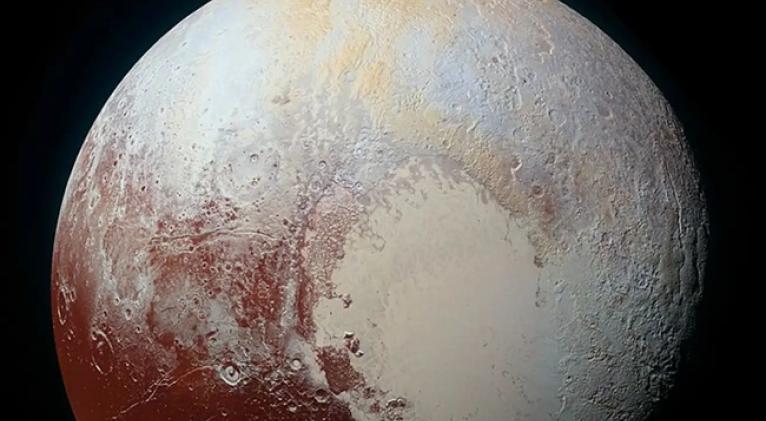Pluto Discovered to Have a Unique Feature in the Solar System
especiales

On the farthest fringes of the Solar System, a small dwarf planet has once again captured the attention of science. Pluto, once banished from the select group of planets, now returns as one of the most fascinating bodies in the nearby cosmos.
Thanks to the latest data collected by the James Webb Space Telescope (JWST), scientists have confirmed that its atmosphere—a tenuous envelope of nitrogen, methane, and carbon monoxide—behaves like no other. What makes it unique is that it's not the gases, but the haze particles suspended in it that regulate the planet's thermal balance.
These microscopic but abundant particles don't just float: they absorb, radiate, and redistribute heat with an efficiency unmatched by any other celestial body in the Solar System. It's an atmosphere in which physics bends to unsuspected rules.
The confirmation of this phenomenon, which seems straight out of science fiction, comes from an international team whose studies were published this spring, and which include a strong theoretical component developed by researcher Xi Zhang of the University of California, Santa Cruz.
This discovery also reveals an unusual dance between Pluto and its main satellite, Charon. Material from the former's atmosphere is ripped away by the latter's gravity and accumulates at its poles, forming reddish patches of transformed chemical compounds. This aerial exchange, a sort of cosmic kiss between two worlds, is unparalleled in the rest of the planetary system.
Zhang is no stranger to this idea. In 2017, shortly after the New Horizons probe's historic flyby in 2015, he proposed that Pluto's atmosphere was dominated by these hazy particles.
His proposal, at the time described as bold, included a concrete prediction: if the particles were responsible for atmospheric cooling, they should emit radiation in the mid-infrared range. But a more powerful tool was needed to test it.
And that tool arrived on December 25, 2021, with the launch of the James Webb Space Telescope (JWST), a space observatory launched by NASA in collaboration with the European Space Agency (ESA) and the Canadian Space Agency (CSA).
His Infrared observations made it possible to measure the thermal emissions of Pluto and Charon separately, revealing in detail the thermal properties of their surfaces, their heat storage capacity, and the distribution of their ices.
The light curves, taken at 18, 21, and 25 microns, not only confirmed Zhang's hypothesis but also provided data that invite us to rethink planetary chemistry.
But beyond Pluto's rarefied atmosphere and its close relationship with Charon, scientists point to something even more revealing: these conditions may bear similarities to early Earth.
Before oxygen dominated our atmosphere, more than 2.4 billion years ago, Earth's chemistry was also based on nitrogen and hydrocarbon compounds.
Understanding how haze regulates energy and transforms chemistry on Pluto could provide clues to how habitable conditions arose on our own planet.














Add new comment